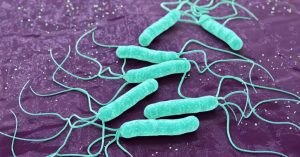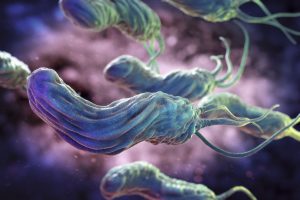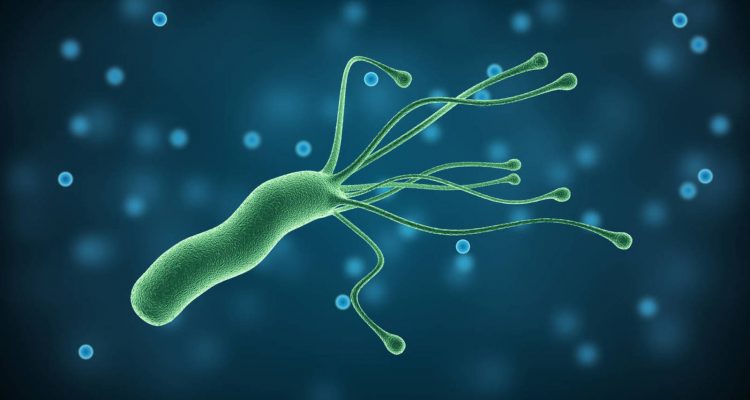Our body is literally stuffed with a variety of microorganisms and is a kind of microbiological dormitory.
Most of its inhabitants are completely law-abiding citizens, they do not violate outrage, they cooperate with internal organs (with the intestines, for example), in a word, they help a person. There are neutral individuals among the “tenants” – they do not bring harm, but there is no benefit from them either. Just random fellow travelers.
And there is a third category – all sorts of hidden pests. Which, under the cover of mucous membranes, do their dirty work, weakening and undermining our body from the inside. Today we will talk about one such representative of the “fifth column”.
Discovery history
The fact that someone is still alive in the human stomach, doctors began to suspect for a long time. At the end of the 19th century, some spiral microorganisms that live in the stomachs of dogs were described. Then a series of more than a century of research followed, and only in 1983 Australian scientists Barry Marshall and Robin Warren made a decisive conclusion: a microorganism lives in our stomach and it does not like us. The Australians even managed to isolate and cultivate a previously unknown animal.
The found microbe received a beautiful Latin name Helicobacter pylori, that is, “a spiral bacterium that lives in the pylorus” (this is the lower part of the stomach, passing into the duodenum). And the investigation of the malicious action of the Helicobacter began.
Scientists’ reports on research were reminiscent of reports from the fronts: “Helicobacter destroys the mucous membrane”, “Helicobacter creates colonies in the stomach.” In 1994, Helicobacter received the title of “first order carcinogen” from the International Agency for Research on Cancer (IARK). And in 1996, D. Forman proved that up to 75 percent of stomach cancer cases in developed countries, and about 90 percent in developing countries, is associated with Helicobacter pylori.
Russian scientists even introduced a special term – helicobacteriosis, calling this bad word everything that happens in the body after the introduction of a spiral sinister. And foreign scientists conducted a census of the Helicobacter pylori population and found that about 60 percent of the world’s population is susceptible to Helicobacter pylori. This is the most common infectious disease of earthlings, apart from herpes, which is of a viral nature.
The true cause of the ulcer
For a long time it was believed that in the harsh climatic conditions of the human stomach, more than one microbial individual cannot survive. Like, she dies in the abyss of gastric juice, dissolving without a trace in hydrochloric acid. And all sorts of gastrointestinal troubles – ulcers, gastritis – it’s all from nerves, smoking, coffee and alcohol. And also from fried, spicy, salty and pickled. All these excesses lead to increased acidity, gastric juice begins to eat away at the gastric mucosa, and here it is – an ulcer, gaping with its uneven edges in the scope of the endoscope.
And it’s scary to imagine how much money pharmaceutical companies that produce antacids (drugs to reduce acidity) earned on this theory. Surely in every home medicine cabinet there is a maalox, rennie, phosphalugel or, in extreme cases, almagel. The level of acidity in the global stomach was decreasing, and the ranks of ulcers grew and strengthened, taking more and more young patients into their ranks. Theories of the occurrence of peptic ulcer disease also multiplied like rabbits, and there were at least 20 of them in university textbooks. It is clear that the more theories, the further the true cause turns out.
And the reason was right under my nose. More precisely, in the stomach. In our stomachs all this time he secretly lived – Helicobacter. And he hurt us to the best of his Helicobacter power.
Helicobacter lives in humans, so humans are the main source of infection. It is clear that in the modern world with its density and intensity of communication, it is very difficult to imagine how to protect oneself from this source.
The main pathway by which the bacteria passes from person to person is called contact-household – through hygiene items, dishes, doorknobs in the toilet. In addition, the oral-oral route is possible – this is how ordinary kisses are called in medical language. By exchanging saliva, we also exchange microbes, and Helicobacter is found both in plaque on the teeth and in the secretions of the salivary glands.
The introduction of a microorganism with medical equipment (so-called iatrogeny), for example, through a poorly processed endoscope, is not excluded.
It becomes clear why almost all of humanity can be attributed to the risk group, and why Helicobacter pyloriosis is called a “family disease”.
What’s happening?
Once in our body, Helicobacter descends to its favorite habitat – the stomach. So that the gastric juice does not disassemble it for parts, the cunning microbe surrounds itself with a protective shell of enzymes that neutralize acid. With its spiral antennae, the pest perforates a layer of mucus that covers the wall of the stomach, and rushes to the parietal (parietal) cells hidden from the acid.
Here, Helicobacter unfolds in full – it simply begins to eat the parietal cells and release toxic products of its vital activity into the environment. This pogrom awakens neutrophils – blood cells that keep order on the ground. Neutrophils emerge from the blood capillaries and chase the troublemaker, eventually eating it. The cells of the gastric mucosa “bitten” by Helicobacter are also destroyed.
The production of protective mucus in this area of the mucous membrane decreases, and hydrochloric acid rushes to the damaged area. Inflammation develops and a defect forms in the mucous membrane – the same unfortunate ulcer. Helicobacter most of all loves the output (pyloric) section of the stomach and the initial section (bulb) of the duodenum. It is there that most often a peptic ulcer occurs in peptic ulcer disease.
How is helicobacteriosis manifested?
Of course, peptic ulcer disease does not develop in all Helicobacter-infected. Here predisposing factors come into force – the wrong diet, the very nerves, smoking and alcohol that help the Helicobacter to do his dirty work. It becomes clear why people with the first blood group are more prone to peptic ulcer disease – their cells produce more specific receptors to which the microbe clings.
But chronic gastritis develops in absolutely everyone. This is the main manifestation of helicobacteriosis. If you are bothered by recurrent painful sensations in the stomach, discomfort “in the stomach”, heartburn, nausea and a feeling of fullness in the stomach, flattened tongue, an unpleasant taste in the mouth, belching, increased bleeding of the gums – there is a reason to think about Helicobacter pylori aggression against your body.
Diagnostics and treatment
Modern diagnostic methods allow you to quickly “calculate” the uninvited guest. Laboratory and microbiological studies can determine the presence of Helicobacter in the gastric mucosa. And then a real war begins.
There is only one method of treatment – the so-called eradication, that is, the elimination, total destruction of the microbial aggressor invading our body. And this is where the problems begin. Helicobacter in laboratory conditions (in vitro) very quickly dies from the simplest antimicrobial drugs, and in a living organism (in vivo) it acquires just the same phenomenal resistance to the most modern means.
Therefore, prophylactic eradication is carried out only on strict indications, so as not to grow a monster resistant to all existing antibiotics. The tactics of treating patients with helicobacteriosis are described in detail in the Maastritht Agreement of the European Community (1996). Eradication courses should be carried out for all patients with peptic ulcer disease who have been diagnosed with Helicobacter pylori. In addition, treatment is indicated for patients under 45 years of age with gastritis and gastroduodenitis, also subject to positive tests.
The “destruction” therapy can also be prescribed for patients with normal functional disorders of the digestive system, but only if, after a complete and comprehensive examination, no other causes of these disorders have been identified.
Prophylaxis
Prevention of Helicobacter https://en.wikipedia.org/wiki/Helicobacter pyloriosis is mainly reduced to the observance of personal hygiene, timely examination and treatment of the whole family, if the disease is detected in one of the relatives.
A vaccine could be an effective method of fighting infection. Studies in animals have shown that it can prevent disease and even cure existing ones, but the mechanism of action of such vaccines is still unclear. Nevertheless, Helicobacteriosis immunoprophylaxis is a matter of the not so distant future. I would like to believe that this will happen in our lifetime.
